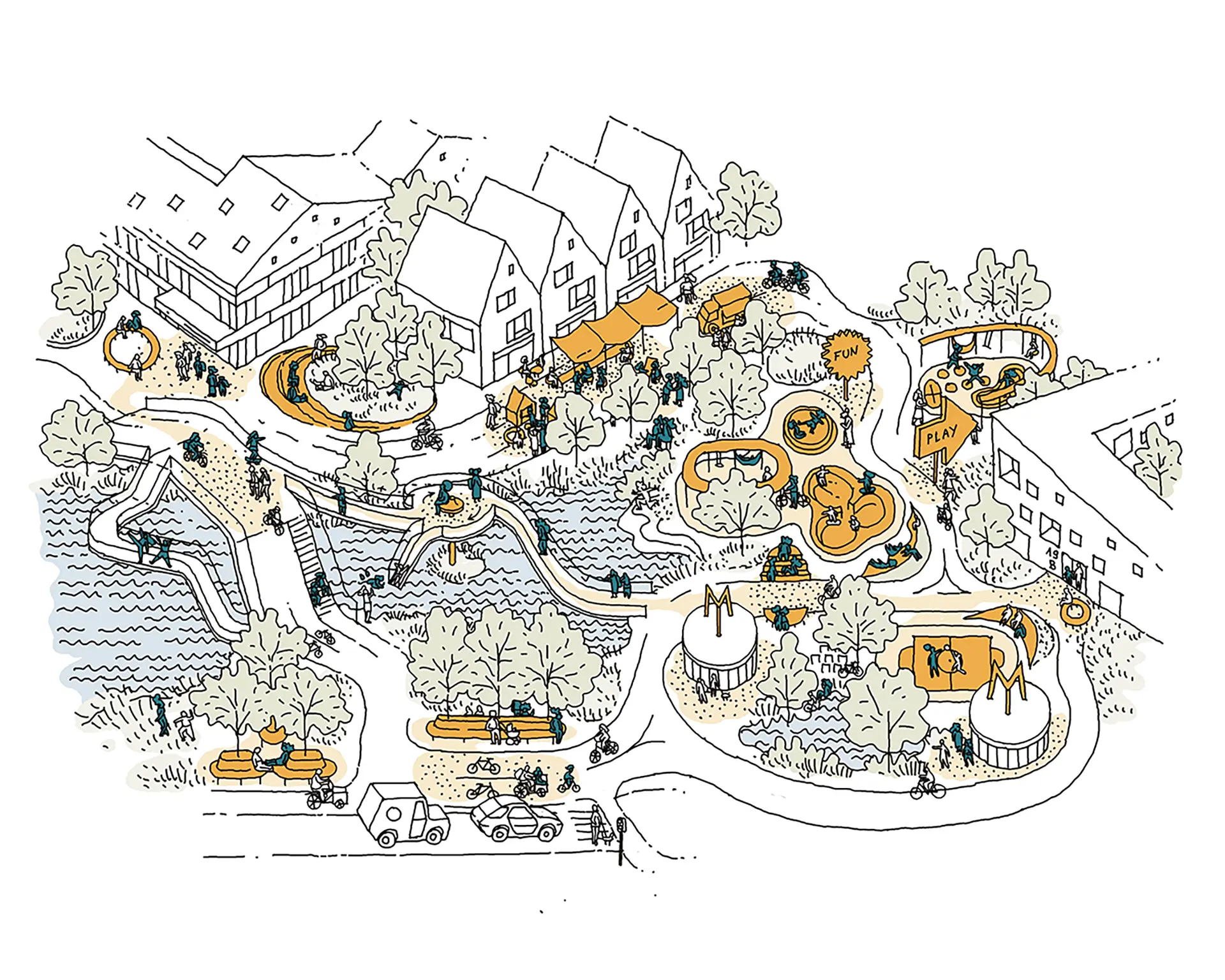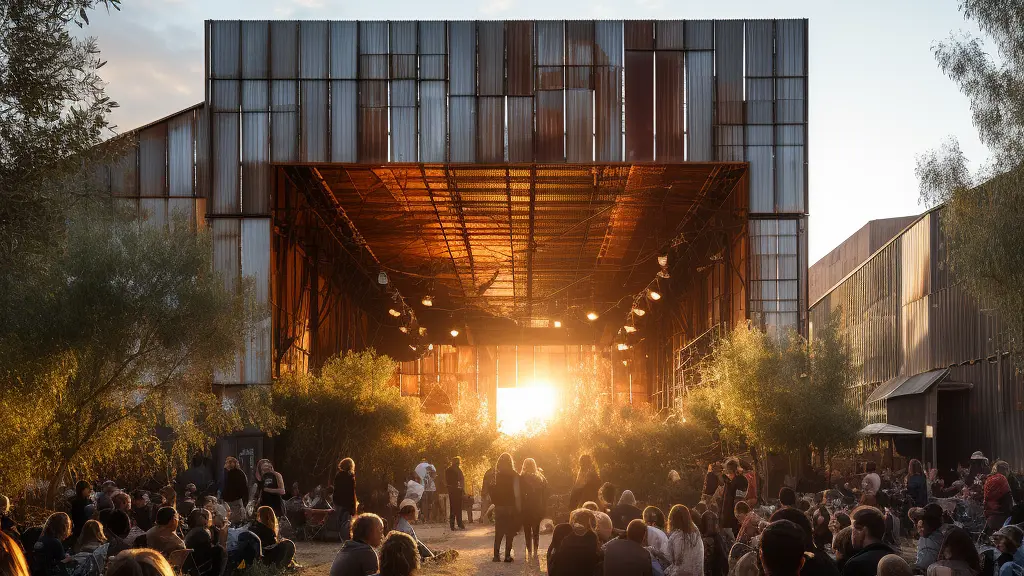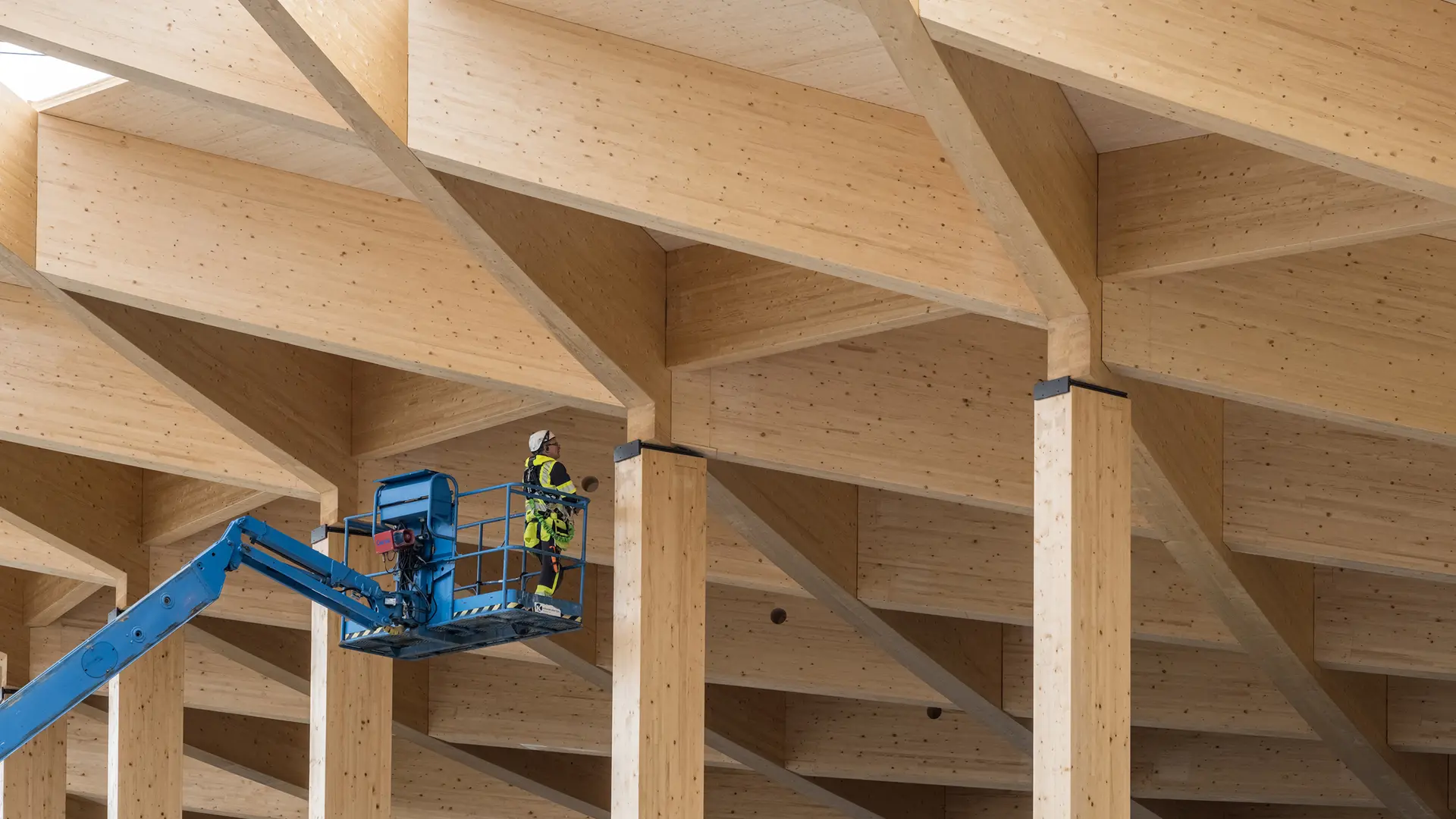Ten years from today: a hopeful look toward our collective future

The start of a new year is often the best time to set ambitions and hopes for what lies ahead. Being part of an industry inherently oriented toward tomorrow, we asked our global innovation and sustainability community to reflect on their desires for the future. The distant future, in fact! Here are their hopes for the year 2034.
Kritika Kharbanda, Lead Sustainability Specialist, based in New York:
Amidst the myriad of trying circumstances all around us, the persistent and inexorable specter of climate change consistently compels me to reflect on the purpose of my endeavors. And as a new year gets underway, I dwell on my hopes for the architecture of the future:
Empathy is top of my mind nowadays. We need to move away from living in large, exclusive, singular spaces, and allow more communal spaces with modest living areas. I foresee a shift from the prevailing model of single-family housing to one that champions multi-family units, facilitating the creation of affordable, equitable, and accessible homes for all.
I dream of a resilient future where all countries have transitioned to a 100% electric grid, with no dependency at all on fossil fuels. My optimism extends to adaptation measures, transcending the bounds of mere mitigation. I envision cities fortified against the rigors of an uncertain climate, fully cognizant of the myriad obstacles, be they economic, social, governance-related, or infrastructural.
Lastly, I harbor hope for an architecture that eschews narcissism in favor of collaboration, openness, encouragement, and inclusivity. Architecture that is more collaborative, more open, more encouraging, and transcends all boundaries.
Bernd Michael Schernau, Associate Director, based in Singapore:
My hope is that in the coming decades, we will see a transformation towards planning that incorporates the idea of regenerative design as a fundamental thought. Buildings will, like living organisms, engage in a symbiotic relationship not only with their occupants but also with the surrounding environment.
Rather than asserting a human-centric spatial dominance, the blue and green structures would symbolize an ethos of equal coexistence. Envisioning living architecture that serves as more than just a testament to human power, I imagine buildings designed to function as vital elements in the ecosystem—providing sustenance, shelter, and breeding grounds for animals.
If we apply research and evidence-based design, buildings have the potential to initiate a turnaround, promoting biodiversity and contributing to the balance of our natural world. While acknowledging the role of our industry in the current crisis, looking 10 years ahead, my optimism extends to the belief that buildings will not merely mitigate the environmental impact but can actively contribute to reversing the alarming trend of biodiversity loss.
Maya Shpiro, R&D/Social Sustainability Advisor, based in Copenhagen:
My hope is for architecture that is intersectional and honest.
Within the next 10 years, I hope design fields acknowledge their ambivalence, as both carriers of existing social orders and agents of change; compliant on the one hand, rebellious on the other. I would want architecture to have done away with its sense of supposed neutrality, embracing the needs of real people and the very real consequences that the built environment bears on their lives.
Katrine Juul, Lead Sustainability Architect, based in Copenhagen:
I hope that we are mining building materials from old buildings and that the new normal will be transforming old spaces into new housing and offices. I hope that our architecture reflects the range that comes with building with reused materials. That said, I would also want to see buildings built out of biogenic materials such as straw or hemp. It is doable, it’s just a matter of designing for it.
Energy and material usage needs to decrease even if we transition to green energy and make fossil fuels redundant. My sincere hope is that this will create amazing resilient social networks of people across ages that will thrive and take care of each other.
I think our roles as architects will still be, maybe more than ever, to achieve these ambitions through design.
Dominik Philipp Bernatek, Architect, DGNB Consultant, ESG Manager, based in Munich:
In 10 years, I hope that architecture is expanding universes on shrinking footprints.
Kristian Edwards, Head of Sustainability and Innovation, based in Oslo:
In 10 years, I hope new architecture is indistinguishable from nature, today is our opportunity to determine what this nature will look like.



